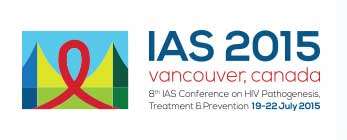
Great progress has been made in reducing the number of new HIV infections and transforming the disease into a manageable and livable condition, but we still have some way to go to achieve an AIDS-free world. Injection drug use is still creating new, local epidemics, and the ways substance use disorders and HIV are intertwined often receive insufficient attention. Worldwide coverage of HIV prevention, treatment, and care services for injection drug users is currently too low. What is needed now are comprehensive, integrated approaches that combine prevention and treatment of HIV and co-infections (such as hepatitis C) with addiction treatment.
In this country, we have seen increases in the numbers of new, young initiates to injection drug use that have been driven by the prescription opioid epidemic and a related rise in heroin use. New injection drug users are at particularly high risk for infection with HIV and hepatitis C. Although there has been progress in reducing the number of new HIV infections attributable to injection drug use in the United States, Canada, and Western Europe, the potential still exists for localized outbreaks, as happened recently in Indiana and has been seen in many other places around the globe.
Treating injection drug users for their opioid use disorders is recognized as a powerful means of both preventing HIV spread and promoting positive HIV treatment outcomes. Research shows that substance abuse treatment leads to initiating HIV treatment earlier, improves treatment adherence, reduces the risk of discontinuing antiretroviral therapy prematurely, and promotes suppression of the virus. Now is the time for additional research on how to best integrate and optimize addiction treatment with early HIV diagnosis (through screening) and early initiation of antiretroviral therapy in injection drug users, which could promote the highest level of sustained viral suppression both in individuals and at the population level. Such integration means combining antiretroviral therapy with agonist and antagonist medications (buprenorphine, methadone, or naltrexone) to manage opioid addiction.
Researchers are actively studying innovative approaches to integrate treatment for substance abuse, HIV, and comorbid conditions, as well as engaging young injection drug users in care and developing strategies to improve retention in treatment. NIDA is poised to have an impact in this area through two of our prestigious award programs. This year, three of our four HIV-focused Avenir awards will be looking specifically at injection drug users. (Avenir Awards are given to young investigators working in HIV and SUD research, to help launch their careers.) This page has more information on this year’s projects. Also, this past February, NIDA announced new Avant-Garde Awards (given to established investigators in the field of HIV research) focused on HIV prevention and treatment in drug users (click here for more information).
Ending the global HIV/AIDS epidemic is an achievable goal, but now requires a concerted push to attack the spread of the virus in the populations most vulnerable both to contracting it and to its health effects. Integrating effective addiction treatment into HIV screening and care will be crucial to this effort.
Nora D. Volkow, M.D.
Dr. Volkow will be delivering the Keynote Address at the Opening Session of the International AIDS Society Annual Meeting in Vancouver, Canada on Sunday, July 19, 2015.
